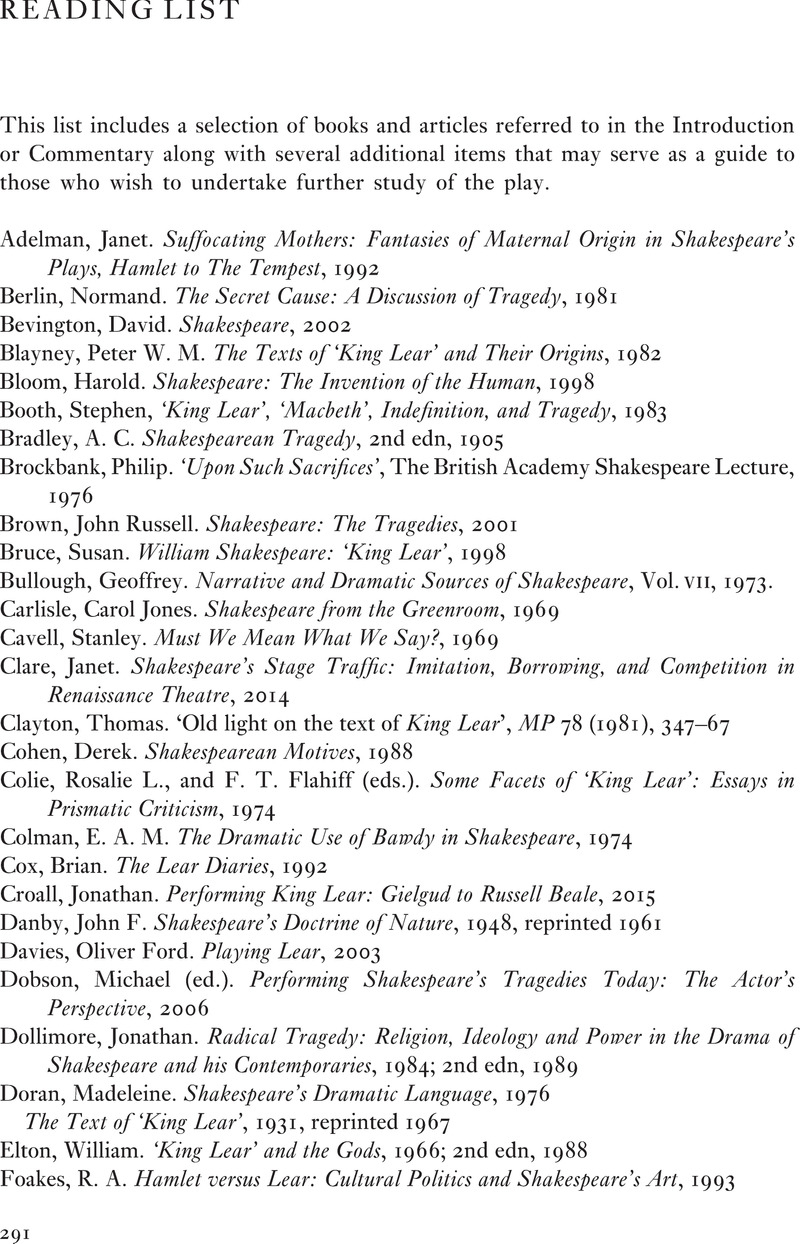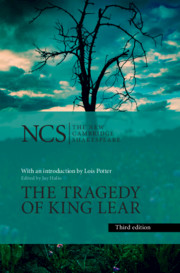Book contents
- The New Cambridge Shakespeare
- The New Cambridge Shakespeare
- The Tragedy of King Lear
- Copyright page
- Dedication
- Contents
- Illustrations
- Preface to the Third Edition
- Preface to the First Edition
- Abbreviations and Conventions
- Introduction
- Textual Analysis, Part 1
- Note on the Text
- The Tragedy of King Lear
- Textual Analysis, Part 2
- Appendix: Passages Unique to the First Quarto
- Reading List
- References
Reading List
Published online by Cambridge University Press: 21 January 2021
- The New Cambridge Shakespeare
- The New Cambridge Shakespeare
- The Tragedy of King Lear
- Copyright page
- Dedication
- Contents
- Illustrations
- Preface to the Third Edition
- Preface to the First Edition
- Abbreviations and Conventions
- Introduction
- Textual Analysis, Part 1
- Note on the Text
- The Tragedy of King Lear
- Textual Analysis, Part 2
- Appendix: Passages Unique to the First Quarto
- Reading List
- References
Summary

- Type
- Chapter
- Information
- The Tragedy of King Lear , pp. 291 - 294Publisher: Cambridge University PressPrint publication year: 2020

